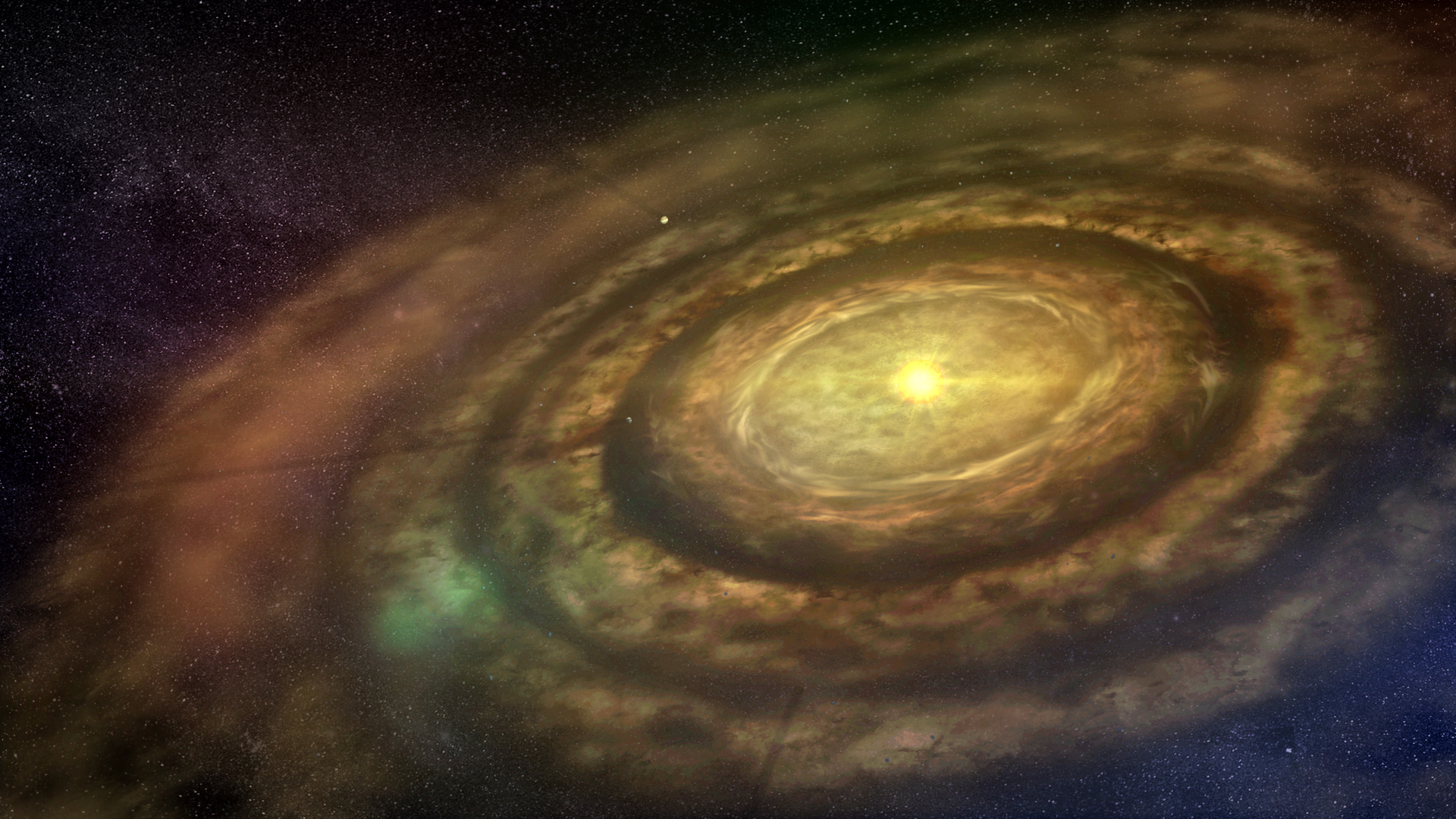Research
Background
When a star is born, the gas rotating around the star forms a disk-like shaped structure. This disk is so-called by a protoplanetary disk. Planets are formed within the protoplanetary disk. Thanks to powerful telescopes such as the Kepler space telescope, many extra-solar planets (which exist outside our Solar System) have been discovered. These observations have discovered some exotic planets; for instance, giant planets orbiting very close to the central star (Hot Jupiter), and numerous close-in Super Earths, and distant massive planets. We now face big questions; how these planets were formed, and what creates the diversity of the planetary systems. One of the origins of the diversity could be the formation and evolution of the planets within the protoplanetary disks.

A cartoon image of a protoplanetary disk (credit NASA).
In the current stage, thanks to great telescopes such as ALMA (Atacama Large Millimeter/submillimeter Array), we can directly observe a planet-forming region within a protoplanetary disk. The observations of the protoplanetary disks have confirmed spirals, gaps and crescent-shaped structures within the observed protoplanetary disks. These structures can be associated to now-forming planets and we could reveal the formation and evolution of the planet within the protoplanetary disk.
I am interested in the origin of the diversity of the extra-solar planets and I have been investigating the formation and evolution of the planets within the protoplanetary disks, by using theoretical way such as numerical hydrodynamic simulations.
Evolution of planets within protoplanetary disks
Due to disk-planet gravitational interactions, a planet excites density waves in the protoplanetary disk and exchange the angular momentum with the surrounding gas. When a planet is as massive as Jupiter, the surrounding gas is removed due to the strong disk-planet interaction, and then the density gap is formed along with the planet's orbit. The gap formation significantly affects the orbital evolution of planets such as the transition from type I migration to type II migration. It also prevents disk gas from accreting onto the planet and slows down the planetary growth. In addition, the gap formation induced by a giant planet possibly explains the formation of the so-called pre-transition disk with a ring gap. Hence, it is important to determine the relation between the planet mass and the gap depth and width.

Due to the gravitational interaction with surrounding gas of the protoplanetary disk, a planet excites density waves.

When a planet is as massive as Jupiter, surrounding gas is removed due to the strong gravitational scattering and then, a density gap is formed along with the planet orbit
Observations of protoplanetary disk and embedded giant planets
Multiple gaps, rings and crescent-shaped structures have been detected in many protoplanetary disks. One of the most impressive images was provided by the 2014 ALMA long-baseline campaign. This observation is the first one that reveals that the disk around the star has multiple gaps which are clearly axisymmetric. Such gap structures are also detected in other protoplanetary disks. Some of these gap structure could be related to forming planets within the protoplanetary disk.
I investigated the qualitative relation between the gap shape (i.e., depth and width) and the mass of the planet within the gap, by using numerical hydrodynamic simulations, and constructed the theoretical model of the planet-induced gap. Our model enables us to constrain the mass of a planet within an observed gap from the depth and width of the observed gap.

The brightness temperature in the ALMA band 6 of HL Tau's disk observed by the 2014 long-base line campaign.
Movies
The following movies are made by using the open-source code, FARGO.
Gap formation induced by a Jupiter-sized gianet planet.
Planet-induced gap for gas and multiple-sized dust grains.
The mass of the planet is 0.5 Jupiter mass.